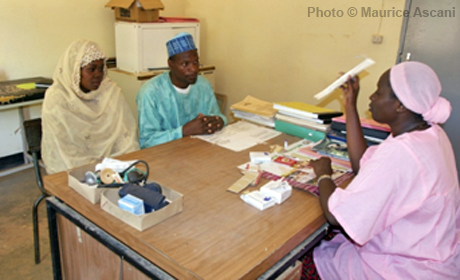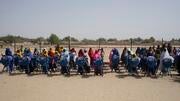-
Country Pages
-
Asia y el Pacífico
- Afganistán
- Bangladesh
- Bhután
- Camboya
- China
- India
- Indonesia
- República Islámica del Irán
- República Democrática Popular Lao
- Malasia
- Maldivas
- Mongolia
- Myanmar
- Nepal
- Pakistán
- Estado Independiente de Papua Nueva Guinea
- Filipinas
- Sri Lanka
- Tailandia
- Timor Oriental
- Vietnam
-
Europa Oriental y Asia Central
- Albania
- Armenia
- Azerbaiyán
- Belarús
- Bosnia y Herzegovina
- Georgia
- Kazajstán
- Oficina de Kosovo
- Kirguistán
- República de Moldova
- Macedonia del Norte
- Serbia
- Tayikistán
- República de Türkiye
- Turkmenistán
- Ucrania
- Uzbekistán
-
Estados Árabes
- Argelia
- Yibuti
- Egipto
- Iraq
- Jordania
- Líbano
- Libia
- Marruecos
- Omán
- Palestina
- la República Federal de Somalia
- Sudán
- República Árabe Siria
- Túnez
- Yemen
-
África Oriental y Meridional
- Angola
- Botswana
- Burundi
- Comoras
- República Democrática del Congo
- Eritrea
- Eswatini
- Etiopía
- Kenya
- Lesotho
- Madagascar
- Malawi
- Mauricio
- Mozambique
- Namibia
- Rwanda
- Seychelles
- Sudáfrica
- Sudán del Sur
- República Unida de Tanzanía
- Uganda
- Zambia
- Zimbabwe
-
América Latina y el Caribe
- Argentina
- Estado Plurinacional de Bolivia
- Brasil
- Chile
- Colombia
- Costa Rica
- Cuba
- República Dominicana
- la República del Ecuador
- El Salvador
- Guatemala
- Haití
- Honduras
- México
- Nicaragua
- Panamá
- Paraguay
- Perú
- Uruguay
- República Bolivariana de Venezuela
- Caribe (multinacional)
-
África Occidental y Central
- Benin
- Burkina Faso
- Cabo Verde
- Camerún
- República Centroafricana
- Chad
- Congo
- Costa de Marfil
- la República de Guinea Ecuatorial
- Gabón
- Gambia
- Ghana
- Guinea
- Guinea-Bisáu
- Liberia
- Malí
- Mauritania
- Níger
- Nigeria
- Sao Tomé y Príncipe
- Senegal
- Sierra Leona
- Togo
-

UNFPA Niger
Among the world’s poorest countries, Niger struggles with a stagnant economy and a rapidly expanding population. Child marriage is prevalent and maternal mortality is high. UNFPA began support in 1983 with programmes that help position family planning in national development plans and increase the quality of and access to reproductive health services. UNFPA assists with the production of demographic data, and encourages human rights norms in education, health and demography policies. The Fund’s work on gender equality helps to improve laws and responses to human rights violations, as well as the greater participation of women and youth in public decision-making.
Población
 Población de 0 a 14 años, en porcentaje
Población de 0 a 14 años, en porcentaje Población de 15 a 64, años, en porcentaje
Población de 15 a 64, años, en porcentaje Population aged 65+
Population aged 65+
Salud sexual y reproductiva
 Nacimientos atendidos por personal sanitario calificado
Nacimientos atendidos por personal sanitario calificado
Planificación familiar
 Modern method
Modern method
Educación
Gender, Rights, and Human Capital
Prácticas nocivas
Population Pyramid
Esperanza de vida
Total fertility rate
Noticias
Empoderar a las adolescentes del Níger para que tomen las riendas de su vida y su futuro
DEPARTAMENTO DE TESSAOUA, Níger - «Toda joven debe tener una actividad económica. Pedir dinero es humillante: tienes...
Un año después del secuestro de Chibok, una niña cuenta cómo sobrevivió a Boko Haram
Hace un año, la noche del 14 de abril, los insurgentes de Boko Haram se llevaron a 276 niñas de una escuela de Chibok,...


Redes sociales
Tweets from UNFPATürkiye